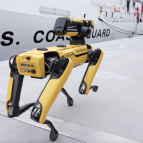Precision Clock Synchronization for Advanced Sensing

Precise synchronization of clocks is important for global navigation, reliable and safe operation of power systems, and efficient communications. In recent decades, the time-keeping accuracy of clocks has significantly improved; however, today's best clocks (accurate to about one second over the age of the universe) are complex laboratory-grade devices that are not yet practical for advanced sensing applications. Such applications include geolocation of radio-frequency (RF) signal sources through networked device arrays; radio astronomy via very-long-baseline interferometry; and radar detection based on antennas positioned at separate sites for transmission and reception (bistatic radar). These applications require clock synchronization across different locations, necessitating advances in methods to distribute clocks so that sensors can locate themselves in both time and position.
The Precision Clock Synchronization for Advanced Sensing project is exploring how emerging quantum networking techniques can be combined with optical signaling techniques offered by laser communication (lasercom) to distribute clocks for advanced sensing applications. Quantum communication networks often require precise quantum synchronization to know when to expect the arrival of quantum-entangled photons (particles of light used to transmit quantum information) so that the information can be distributed with high fidelity. Similarly, lasercom terminals must achieve precise optical synchronization to successfully relay information through free space.
The project team is developing two concepts of operation. One concept focuses on optical synchronization for theater-sized intelligence, surveillance, and reconnaissance (ISR) geolocation through an array of small uncrewed aerial vehicles (UAVs) interconnected via lasercom links. This system would provide precise time and position information improving upon that provided by existing GPS capabilities while benefitting from the security and low detectability of lasercom links. The second concept focuses on quantum synchronization that works with ultralow optical power. Originally developed for quantum networking, this approach could reduce lasercom system size, weight, and power (SWaP) requirements or provide more accurate time and position information.
The team has created a baseline design for the ISR application. They demonstrated that a low-SWaP lasercom system incorporating today’s lasercom technology could match the performance of traditional GPS-dependent geolocation methods. Combined with the quantum networking synchronization technique, this lasercom system could improve geolocation performance by 10×.



